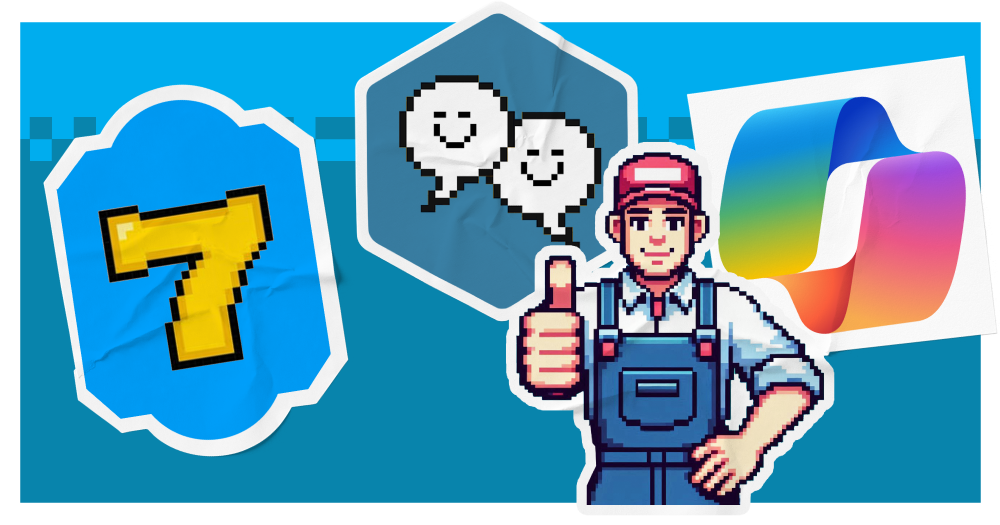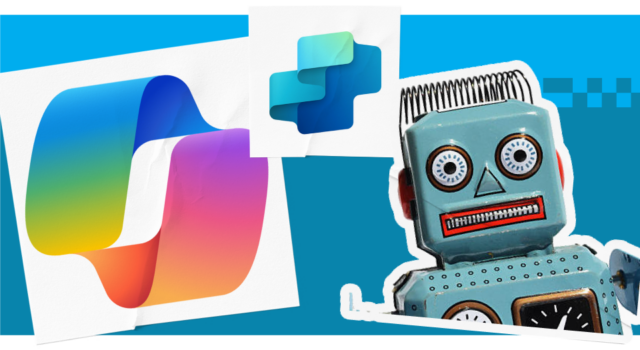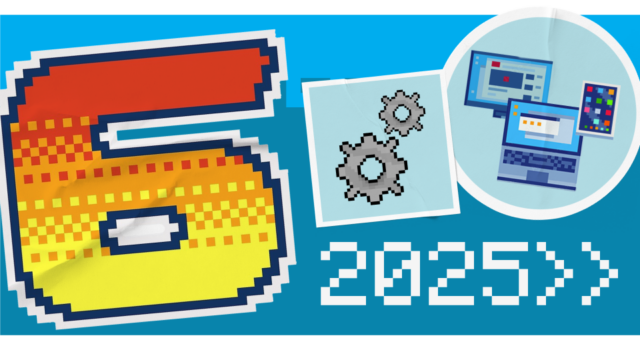AI usage has been steadily increasing over the last few years, regardless of industry, job function or business size. Those who aren’t using it risk falling behind the trend, leading to competitor overshadowing and skills gaps.
Due to this, it’s no longer a question of whether you should or shouldn’t use AI, but instead how you can use it most effectively. By using AI in the best way, you can ensure you get the benefits, remove the risks and stay at the forefront.
But using AI can be daunting. Up until a few years ago, nobody knew anything about prompting, ChatGPT or Copilot. So, suddenly changing your behaviour to incorporate AI into your daily work can be hard.
On top of this, many of us feel like we don’t have the time to properly experiment with AI and find new ways to use it. These can lead to lazy usage, where we simply chuck in a question and see what comes back out. Long-term, this prevents you from getting maximum value from AI, making it more of a hindrance than a help.
Fortunately, as more people explore AI, best practices are emerging. Simple, practical adjustment to your usage can quickly shift your perspective and secure better business value.
We’ve listed our top seven AI tips to help you get more from it.
Remember, context is key_
Before we jump into tips, we want to cover off the biggest lesson you need to know to use AI effectively. And that lesson is: context is everything.
It sounds cliché, but AI output is only as good as the input. This is why prompting is such a highly regarded skill in the post-AI world, as it enables us to set up tools to deliver high-quality responses, faster.
For the tips below to work best, you need to give detail. The more, the better. This doesn’t mean giving away company secrets or confidential data. Instead, prompt the AI with specific detail about what you’re trying to achieve, what the purpose is, who it’s for and any other supporting information.
Some AI tools, like Microsoft Copilot, can be integrated with your data which enables this contextualisation to happen automatically, saving you some of the workload. But you’ll still need to share information around what you want to achieve, in detail.
By giving context freely, you’ll get more accurate information that nails the brief.
1. Focus on conversations, not commands_
In the age of search, we learned to type a few words into a search engine (like ‘what to include in competitor research’) and get results to choose from. Then the interaction was done.
Many of us use AI in the same way. We ask it a question, take the answer and move on. But the unique capabilities of AI mean we can have a back-and-forth conversation to refine the answers given.
This gives you the opportunity to add in more context. If the initial answer isn’t fit for purpose, you can let the AI know what you’re trying to achieve or any nuances to be aware of. You can also give it concerns you have or elements you want more of.
With each additional prompt, the AI should work with you to provide output that better meets the brief and accounts for contextual information. This conversation can go on for as long as you need it to – AI has all the time in the world.
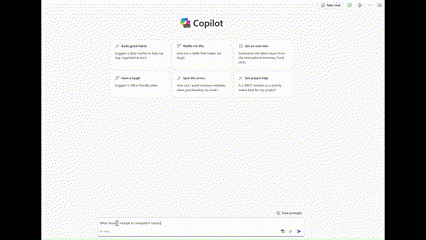
2. Locate information in seconds_
A recent Microsoft survey found half of workers spend more time searching for information (27% of their day) than creating (24%) it. However, you can get AI to do this searching for you.
Most AI tools are grounded in the web, giving it advance to a vast library of resources. Tools like Copilot can also be grounded in your organisational data and information, enabling you to easily find documents.
The same survey found that only half (50%) of the information people take in every day is considered necessary for their job. The benefit of using AI is that you can tell it exactly what you’re looking for and why. It will then uncover only relevant information and serve it to you in a way that addresses your needs.
This can save you significant chunks of time, just be asking AI to find something rather than doing it manually. And that’s time you can focus on creating valuable work that drives progress.
3. Use roleplay_
Another benefit of AI is that it can take on any persona you want. From mentors and industry experts to customers and critics, it will take the stance you ask it to, using its wide library of information to offer accurate perspectives.
This is ideal for helping you to generate and refine content or walk through scenarios. For example, if you’re looking to craft a marketing email that aligns perfectly with leads, you can ask AI to embody that persona and show you the right messages to deliver. If you’re working on a technical document but are worried it might not address regulations, you can ask it to take the point of view of a compliance colleague and highlight any gaps.
The possibilities are endless. By using AI in this way, you’re better placed to understand how information will land with the target audience, overcome potential issues and get the expertise you need to perfect your work.
If you are using AI for roleplay, remember that the more information you give it, the better. If you’re asking it to embody a customer persona, for example, you will need to give it context about who that person is, what their challenges are and other supporting information. This will enable it to better take the role you need and drive the accuracy of output.
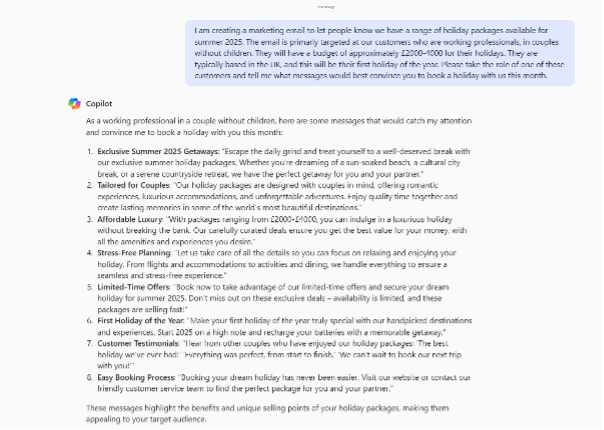
4. Know AI’s limitations_
Despite AI being an incredibly powerful technology, it does have limitations. If it didn’t, we’d use it all the time, for everything. Knowing these limitations is key to understanding where you should and shouldn’t use AI, so you avoid wasted time and focus on value.
Common limitations with AI include:
- Privacy concerns: There are still unanswered questions around AI and data privacy, especially if you’re using public tools. Due to this, it should not be used when you’re handling highly sensitive data.
- Emotional intelligence: AI isn’t human, so lacks the emotional intelligence most of us have innately. This means AI isn’t always useful when handling sensitive personal situations or trying to find ways to better connect with customers, leads and colleagues.
- Creativity: The lack of humanity also means AI often comes off as unoriginal, cheesy and unhelpful when trying to come up with different creative ideas. Brand visuals, core messaging and other creative work is best left to human (though AI can give you some starters for ten).
- Bias: Some AI models are prone to bias and hallucinations, which mean output doesn’t always fairly address or represent all social groups. AI should therefore not be used for ethical considerations and should always be safeguarded by humans.
- Cultural understanding: AI doesn’t have a set identity, which may mean it misses on cultural references. If you’re looking to create for a specific identity, you may struggle to get the right information from AI. It may also fail to understand slang, colloquialisms and other cultural elements.
By pinpointing these limitations, you can identify where AI works for your organisation and where it does. This helps you build the right use cases.
In some cases, the limitations can even create new use cases. For example, as AI is grounded in information that already exists in the world, it can be useful for avoiding ground that has already been covered and force out-of-the-box thinking.
5. Ask for a step-by-step response_
AI can also be incredibly useful at walking you through scenarios, helping you to make the right considerations at every stage. This is also ideal as it helps you to sense check the AI and make sure it’s followed correct process.
With this type of prompting, you should get an ordered list of steps. Begin by explicating stating you want a step-by-step response, alongside what it is you want to find out (e.g. ‘give me a step-by-step approach to writing a business case’).
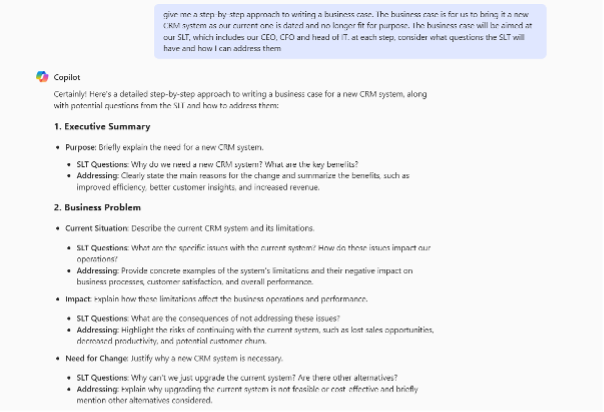
Once again, remember to include as much context as possible, including specific steps it must include.
You can give the information for a step-by-step response in one prompt. Alternatively, you can ask it to tackle each step at a time, then follow up with prompts until you’re ready to move to the next step.
6. Ask it to self-review_
As we’ve already mentioned, AI does have its limitations. Sometimes a poor prompt can also lead to it doing exactly what you don’t want to. On top of this, it’s sometimes not clear how it arrives at conclusions, which can lead to doubt about accuracy.
Due to this, AI always needs some level of human intervention, whether that’s factchecking or editing output. However, you can ask it to do some of this itself.
One noticeable setback in generative AI is that, even if it doesn’t know an answer, it will come up with a response. Sometimes, that response won’t be grounded in anything factual. A good line to add to prompts to avoid this is something like ‘Only give me information you know is true’. Alternatively, you can ask it to give references to proof the sources for information.
Another approach is to ask the AI to explain how it reached its conclusion. A question like ‘What was your approach for this answer?’ or ‘How did you come to this decision?’ forces the AI to go through its methodology so you can spot any potential errors and correct them.
It’s worth experimenting with different prompts to find which works best for you. If you can get the right one, it’ll save you having to manually factcheck the AI as much, saving even more time.
7. Let AI allow you to be more human_
The most discussed reward of AI is time savings. It is great for automating and speeding up tasks, freeing employee time from manual, mundane and repetitive tasks. This is valuable in itself.
But you can drive the value further by using the time reclaimed wisely. Ideally, that should be on using uniquely human skills to create something amazing.
For example, while AI takes care of repetitive processes, your team can create company strategies that drive your growth and take you to new milestones. While it generates competitor research, you can be thinking about innovative products that fill market gaps. While it takes of marketing admin, your team can be thinking about ways to offer exceptional customer experiences or stand-out brand messaging.
By utilising newfound capacity for creativity, strategising, innovative thinking and human connection, you can better utilise staff’s strengths. This is what can drive the difference between a business and a business that excels.
Get even more from AI_
Getting value from AI boils down to knowing where to use it to get the most reward and setting it up for success. This often relies on strong use cases and prompting.
This doesn’t happen overnight. It will take you time to understand how to best use AI through experimentation.
However, our promptbook can give you a head start. With tips on how to perfect prompting and 50 examples to try straight away, it can help you to explore AI across your business functions and discover what has the biggest impact.
